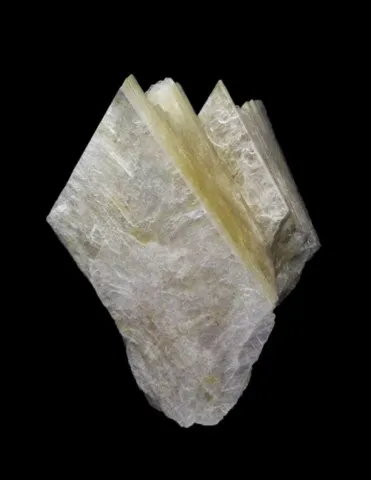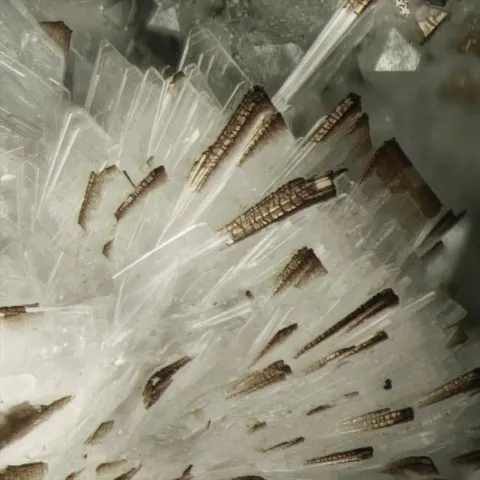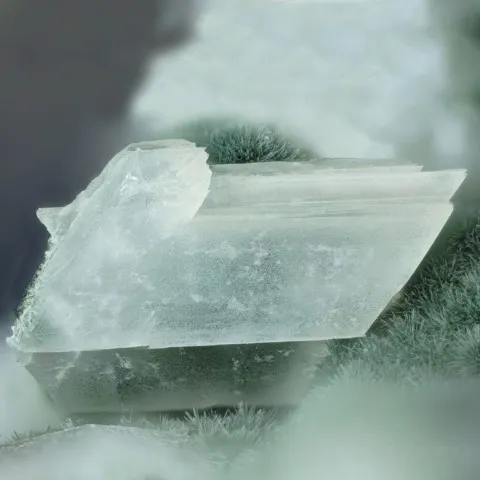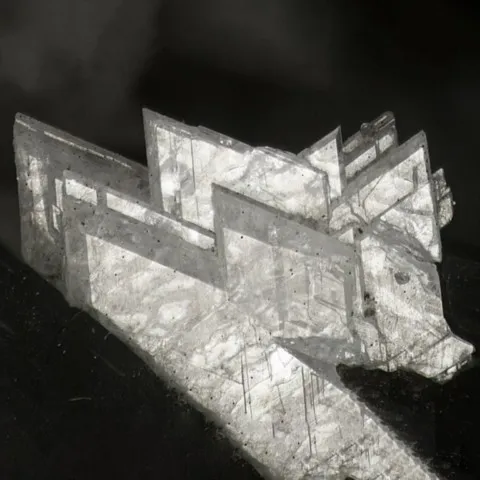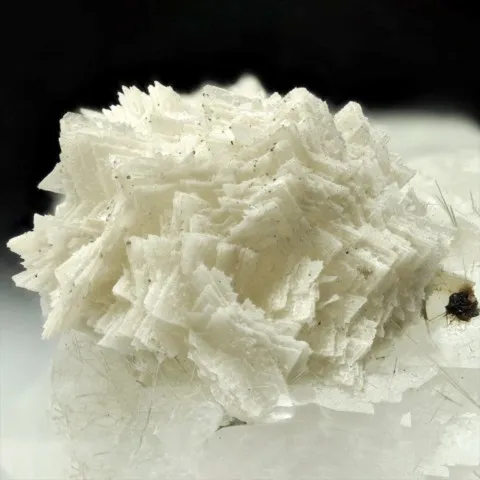EUDIDYMITE
Class : Silicates
Subclass : Inosilicates
Crystal system : Monoclinic
Chemistry : NaBeSi3O7(OH)
Rarity : Rare
Eudidymite is a rare sodium beryllium silicate, dimorphic from epididymite. It is a mineral found in the pegmatites of nepheline syenites, associated in particular with albite, aegyrine, nepheline and eudialyte. It takes its name from the Greek eu (good) and didumos (twin) because it almost always appears in twinned crystals. Eudidymite forms centimeter-sized tabular to lamellar crystals, commonly twinned, micaceous or spherolitic aggregates with a fibroradiated texture, or fine-grained masses. Usually colorless to white, eudidymite can also be shades of purple, bluish or yellow.
Main photo : Epididymite of Poudrette Quarry, Mont St-Hilaire, Quebec, Canada © Martin Slama
Eudidymite in the World
Twinning
Twins are common on {001} forming V-shaped and star-shaped.
Fakes and treatments
No fake listed for this mineral species.
Hardness : 6
Density : 2.55
Fracture : Irregular
Streak : White
TP : Translucent to transparent
RI : 1.545 to 1.551
Birefringence : 0.006
Optical character : Biaxial +
Pleochroism : None
Fluorescence : None
Solubility : Hydrofluoric acid
Magnetism : None
Radioactivity : None

